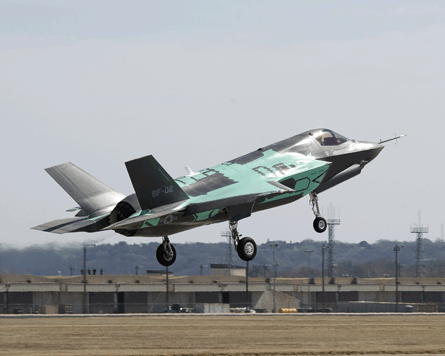Lockheed Martin has received a key endorsement from the F-35 Joint Strike Fighter's biggest customer, but a critical piece of its flight-test programme for the type remains stalled.
Secretary of Defense Robert Gates made a rare visit to the F-35 final assembly line in Fort Worth, Texas on 31 August, during which he called the JSF the "core" of the US military's future tactical fighter fleet. "My view is we cannot afford, as a nation, not to have this airplane," he said.
Gates heavily promoted the F-35's relative affordability and flexibility: a key part of his strategy to justify a decision to cancel production of the US Air Force's Lockheed F-22 fighter after 187 aircraft.
But Gates seems equivocal about the chances of further cost increases for the F-35. The programme's overall costs for the US government have already grown by about 50%, or $100 billion, since contract award eight years ago.
 |
|---|
© Lockheed Martin |
"You never know in these programmes," he says. "I can't stand here and say there won't be further cost growth. But I think everybody is aware of the importance both of the timelines and the execution of this programme to keep the cost as low as possible."
But the programme's revised goal to demonstrate the first vertical landing of the F-35B variant in September or October faces new pressure. Lockheed confirms that the return to flight for its BF-1 prototype, which has been grounded for more than a year, remains delayed.
"They've gone out to fly it a couple of times but got a squawk and had to come back," says Lockheed. "On 24 August they got an 'overtemp' indicator in the [integrated power pack] exhaust area. They're trying to determine if it's a sensor problem or an actual issue. They're troubleshooting that." The company adds: "Nothing major has held it up, just frustrating technical things."
Lockheed plans to fly BF-1 to Patuxent River NAS, Maryland, in late September. After the flight-test asset arrives, the aircraft must complete a series of as many as a dozen flights before attempting its first vertical landing.
Meanwhile, test aircraft BF-2 has completed a series of flights to qualify the fighter for aerial refuelling, Lockheed says. The aircraft is also receiving its final layers of coatings.
Source: Flight International



















